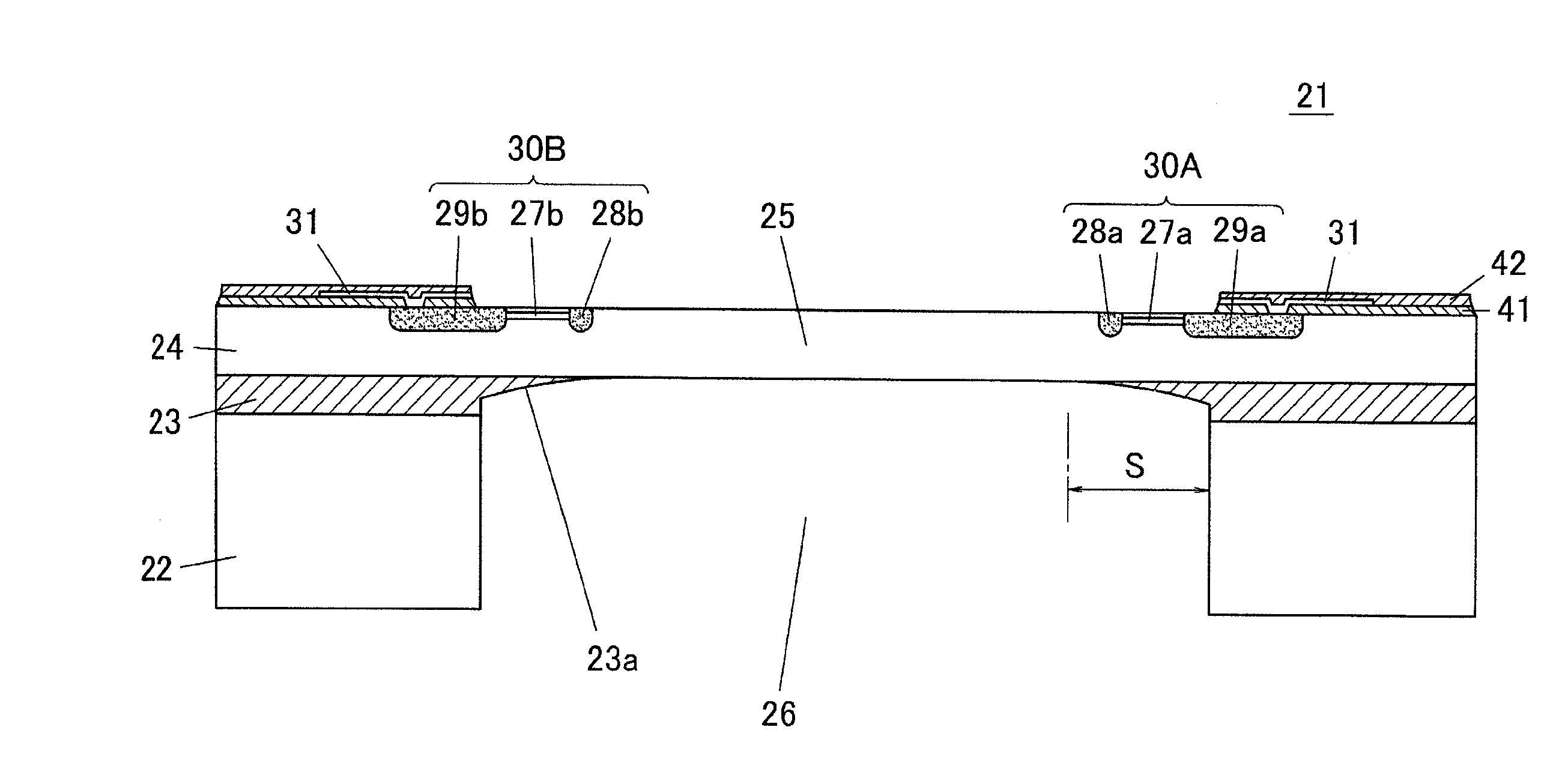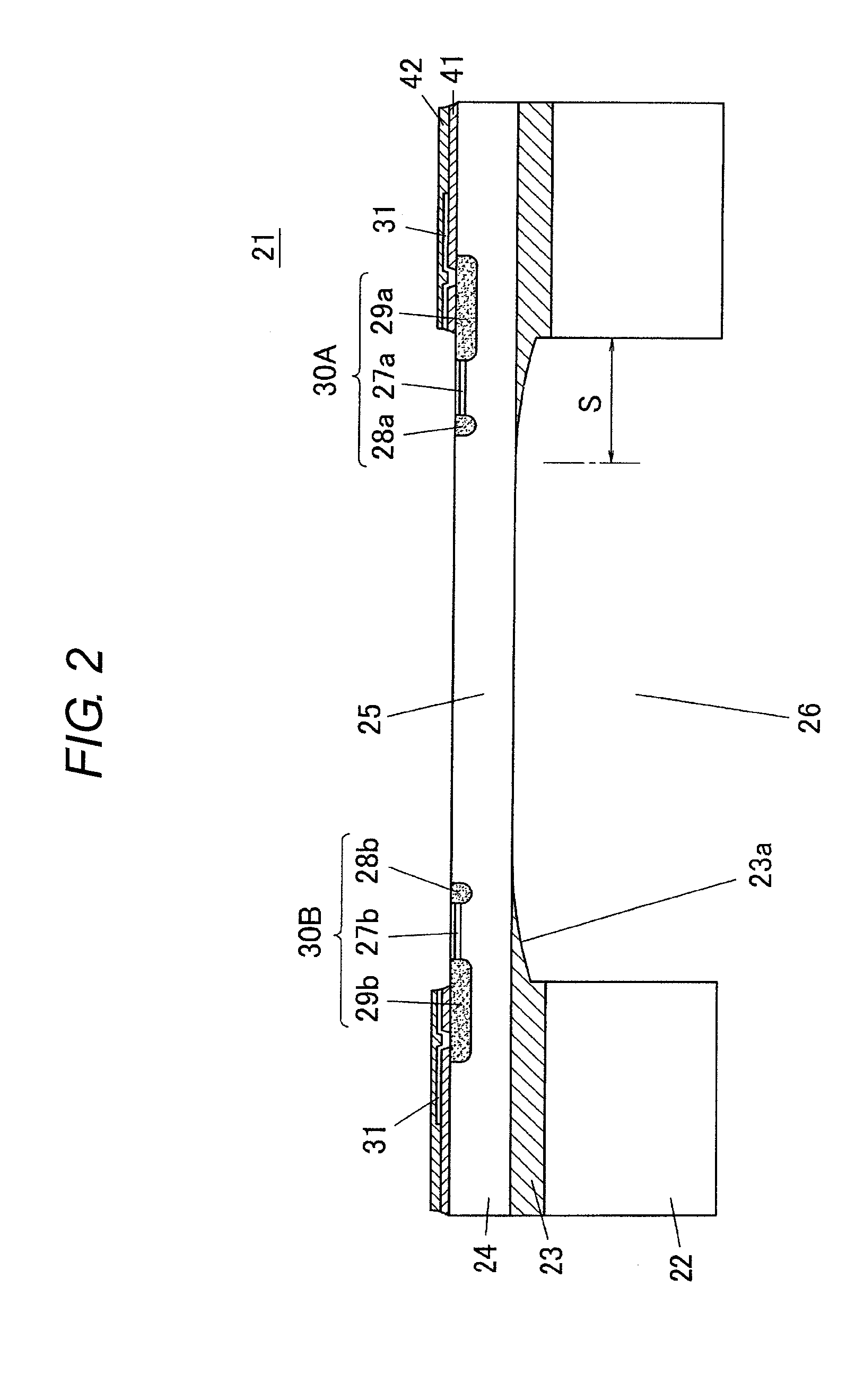Semiconductor sensor and method of manufacturing the same
a technology of semiconductors and sensors, applied in the field of semiconductor sensors, can solve the problems of extending cracking, distorted diaphragms to have temperature characteristics, and distorted diaphragms, and achieves the effects of high etching selectivity, short manufacturing time, and fast etching ra
- Summary
- Abstract
- Description
- Claims
- Application Information
AI Technical Summary
Benefits of technology
Problems solved by technology
Method used
Image
Examples
first embodiment
[0027]FIG. 2 is a sectional view showing a semiconductor sensor according to a first embodiment of the invention, that is, a pressure sensor 21. With reference to FIG. 2, the structure of the pressure sensor 21 is described. As shown in FIG. 2, the pressure sensor 21 is manufactured using an 501 substrate. An SOI substrate is obtained by bonding an N-type Si substrate 22 (first semiconductor layer) and an N-type Si thin film 24 (second semiconductor layer) with a SiO2 film 23 (insulating layer) interposed therebetween. The pressure sensor 21 has a round diaphragm 25 (sensitive region that is not fixed to the Si substrate 22) formed of part of the Si thin film 24. The diaphragm 25 is slightly displaced in the film direction by a pressure of an object being sensed.
[0028]The pressure sensor 21 has a cylindrical recess 26 (cavity) formed from a bottom surface of the Si substrate 22 up to a top surface of the SiO2 film 23, in accordance with a bottom surface of the diaphragm 25. In a top...
second embodiment
[0051]FIG. 6 is a cross-sectional view showing a pressure sensor 51 according to a second embodiment of the invention. In this embodiment, the recess 26 has a tapered top such that the horizontal cross-sectional area of the recess 26 increases from the top toward the bottom.
[0052]FIGS. 7A to 7D are cross-sectional views showing a method of manufacturing the pressure sensor 51 of the second embodiment. FIG. 7A shows the same SOI substrate as that in FIG. 3B described in the manufacturing method of the first embodiment. The resist 44 is formed on the bottom surface of the Si substrate 22, and the opening 45 is made in the resist 44. However, a material resistant to an etchant used in a wet etching process, such as TMAH and KOH, is used as the resist 44.
[0053]Subsequently, anisotropic etching of the Si substrate 22 is performed through the opening 45 of the resist 44 by a wet etching process, digging down the recess 26 in a tapered shape. The etching is performed until the bottom surfa...
PUM
 Login to View More
Login to View More Abstract
Description
Claims
Application Information
 Login to View More
Login to View More - R&D
- Intellectual Property
- Life Sciences
- Materials
- Tech Scout
- Unparalleled Data Quality
- Higher Quality Content
- 60% Fewer Hallucinations
Browse by: Latest US Patents, China's latest patents, Technical Efficacy Thesaurus, Application Domain, Technology Topic, Popular Technical Reports.
© 2025 PatSnap. All rights reserved.Legal|Privacy policy|Modern Slavery Act Transparency Statement|Sitemap|About US| Contact US: help@patsnap.com



